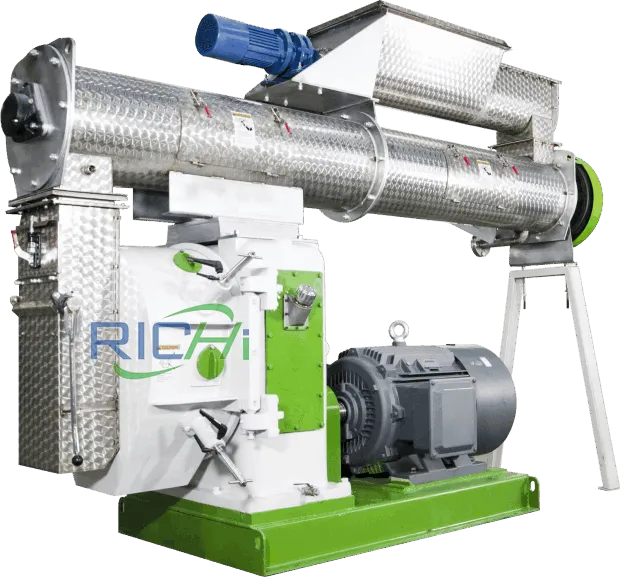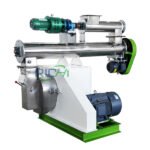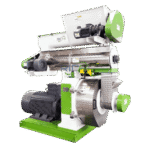Introduction
In the evolving world of poultry farming, profitability and sustainability have become two sides of the same coin. As input costs rise and environmental awareness grows, poultry producers are increasingly seeking technological solutions to optimize their operations. One of the most effective tools in this transformation is the poultry feed pellet machine.
This article explores how poultry feed pellet machines not only increase feed efficiency and bird health but also significantly boost farm profitability and support long-term sustainability. Whether you’re a small-scale farmer or a commercial enterprise, understanding the strategic role of feed pellet machinery can empower better decisions for the future of your business.

1. The Modern Challenge in Poultry Farming
The poultry industry faces multiple challenges:
- High feed costs, which can make up to 70% of total production expenses.
- Fluctuating feed quality when sourcing from external suppliers.
- Inconsistent bird performance due to poor diet formulation.
- Waste and environmental concerns from spilled, spoiled, or excess feed.
To address these challenges, many farmers are turning to in-house feed pellet production, which ensures quality, consistency, and cost control.
2. What Is a Poultry Feed Pellet Machine?
A poultry feed pellet machine is a mechanical device that compresses mixed poultry feed into compact pellets. The process typically involves:
- Grinding raw materials into powder
- Mixing them thoroughly
- Conditioning the mix with heat or steam
- Compressing into pellets via a die and roller system
- Cooling and packaging
Pellet machines come in two main types:
- Flat Die Pellet Machine: Suited for small-scale use.
- Ring Die Pellet Machine: Ideal for commercial operations due to higher output.
3. How Feed Pellet Machines Boost Profitability
a. Reduced Feed Costs
Producing feed in-house cuts out the middleman and reduces markup. You gain:
- Bulk buying advantages for raw materials
- Savings on transport and packaging
- Control over recipe cost optimization
This results in up to 25% reduction in total feed expenditure.
b. Improved Feed Efficiency
Pellets are more digestible due to heat treatment and compact form, leading to:
- Better Feed Conversion Ratio (FCR)
- Faster growth and better weight gain
- Reduced feed wastage (less scatter or spoilage)
Better efficiency = more meat or eggs per kilogram of feed = higher profits.
c. Custom Formulation
You can create specific formulas based on:
- Poultry type (broiler, layer, breeder)
- Growth stage (starter, grower, finisher)
- Nutritional requirements (energy, protein, calcium, etc.)
This means no overfeeding or underfeeding nutrients, resulting in more consistent flock performance and reduced mortality.
d. Selling Surplus Feed
With the right licenses, surplus feed can be sold to nearby farms, providing an extra revenue stream.
4. Sustainability Benefits of Pelletizing Feed
Sustainability is not just about going green—it’s about long-term viability. Poultry feed pellet machines support sustainable practices by:
a. Minimizing Feed Wastage
Pellets are durable and uniform, so birds consume them efficiently with minimal spillage or dust. Less waste means less environmental load and more efficient resource use.
b. Reducing Transportation Footprint
Pellets are denser and compact compared to mash or crumbles, which lowers transportation volume and cost—reducing fossil fuel consumption.
c. Enabling Circular Economy
Farmers can use agricultural by-products (e.g., rice bran, maize husks, fishmeal scraps) in their feed mix, which:
- Reduces environmental waste
- Adds economic value to otherwise discarded materials
d. Enhancing Biosecurity
Producing feed in-house reduces dependency on external suppliers who might introduce contaminants or diseases, supporting healthier and safer farm environments.
5. Real-World Example: Profitability Case Study
Farmer John’s Poultry Farm (South Africa)
- 10,000 broilers, growing cycles every 45 days
- Previously bought commercial feed at $550/ton
- Switched to in-house pellet production at $410/ton
Annual Savings:
- 5 cycles/year × 80 tons/cycle = 400 tons/year
- 400 × ($550 – $410) = $56,000 saved annually
Break-even on equipment and setup achieved in less than one year.
6. Selecting the Right Feed Pellet Machine for ROI
Factors to Consider:
| Factor | Description |
|---|---|
| Capacity | Match to your daily/weekly feed needs |
| Pellet Size | 2–4 mm for poultry is ideal |
| Die Type | Flat die for 100–1000 kg/h; Ring die for larger |
| Automation | Full automation reduces labor, increases yield |
| Conditioning Option | Improves pellet durability and digestibility |
Popular Configurations:
- Small-Scale Farm: 500–1000 kg/h Flat Die Machine
- Mid-Level: 1–3 t/h Ring Die Machine with Mixer & Cooler
- Large Commercial: 5+ t/h Fully Automatic Line
7. Operational Tips to Maximize Benefits
- Maintain uniform raw material moisture (10–12%)
- Regularly inspect dies and rollers for wear
- Keep machines clean to avoid contamination
- Test feed samples for nutrient levels monthly
- Use software or expert formulation to balance feed
Proper operation and maintenance keep the machine running efficiently and consistently.
8. Financing and Investment Support
Governments and NGOs often offer:
- Agricultural equipment subsidies
- Low-interest loans for farm technology
- Training programs on feed formulation and machinery
Farmers should check with local agricultural departments to leverage financial support for investing in feed pellet technology.
Conclusion
Poultry feed pellet machines represent a smart investment that bridges the gap between economic gain and sustainable practice. By reducing costs, improving flock performance, and enabling eco-friendly operations, they are reshaping the future of poultry farming.
For poultry farmers seeking to future-proof their operations, embracing feed pelletization is not just an upgrade—it’s a necessity. The machine pays for itself quickly, supports healthier birds, and unlocks long-term profitability.

